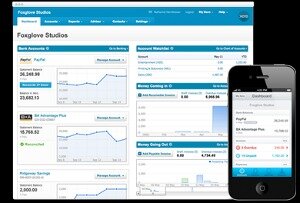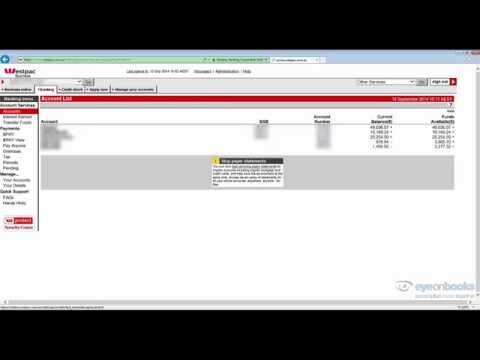
Along with this, a proper differentiation between your business and personal finances will make the process of income tracking, tax filing simpler, and claim deduction simpler. Along with small business finance management, corporate credit cards provide an easier way of abidance and reporting for a progressing small business. Cash flow documents, as the name suggests, determine the company’s cash flow, help in future financial forecasting, and are essential for managing expenses for small businesses. Some metrics gauge how well your company is using its capital and assets to generate revenue. For these metrics, you’ll need information from your income statement and balance sheet, which is a snapshot at a given time of how much your company owes and how much it owns. The income statement (or profit and loss (P&L) statement) helps a business see its overall profit or loss during a given time period.
The bank then has less risk and is more willing to provide the business loan. Small business loans generally have more favorable terms and are more accessible to a wide range of credit types. Established small businesses, typically with two years in operation, generally opt for term loans. They use term loans to buy assets (such as equipment) or growth investments, versus using it to cover day-to-day expenses.
- Setting up your business finances is a crucial part of setting your business up for success—but if you don’t know where to start, the process can feel confusing, frustrating, and downright overwhelming.
- Also, till the time you don’t get that money, what would you do without any cash flow?
- The next thing for managing small business finances is to invest in technology and understand all the terms related to your business in order to maintain the number 1 position in the business market.
- Unlike single entry, double-entry bookkeeping tracks your assets and liabilities in addition to revenue and expenses and has the checks and balances needed to reduce errors.
- Simultaneously, you also need to understand how you can save money on taxes.
- Analyzing your cash flow statement can help you determine how much cash you have available to pay bills and grow your business.
Employee payroll processes can be extremely complex and have hidden costs here and there. Your business’s cash flow can also be improved by having access to a line of credit. As a small business owner, besides understanding the tax deductions, with this practice, you can also reduce your tax burdens. The amount left after deducting expenses from the total revenue is the profit earned. However, if your expenses are more than revenues, then your P&L statements would display losses. A profit and loss statement is an outline of the expense undertaken and revenues generated by your business over a particular period.
Income statement
You’ll want to pad your operating budget to account for any unexpected operating expenses (just like you did with your startup budget). When it comes to choosing a financial pro to support your business, you have options. Determine what your needs are, research financial professionals that might be able to fulfill those needs, and interview pros until you find the pro (or pros) that fit the bill.

One-time expenses usually are big-ticket items you buy once (or sometimes every few years). It can also include services like logo design or website development. For example, if you’re dealing with several different vendors on a regular basis, you’ll want to make sure you have a low (or no) transaction fee on purchases.
Don’t be afraid of loans.
Meru Accounting has a team of competent financial advisors who will ensure that you are running your small business smoothly and your finances are being managed adequately. Accounting software such as QuickBooks can assist in streamlining business financials and make monitoring expenses and income much easier. Once you know precisely how the expenses and revenues are stacking up, it becomes easy to start making more informed business decisions.
Regardless of your business model or your level of experience in business finance, there are certain fundamentals that all small business owners can follow to build a foundation for success. With the following strategies, you’ll be on your way to informed budgeting, efficient accounting, and positive cash flow. If you need to keep costs low, consider outsourcing to Free Online Bookkeeping Course and Training someone who can spend a couple of hours a month reviewing your DIY bookkeeping and providing strategic advice. As your business grows, you can always scale up their services to get help with payroll, inventory, cash flow management and more. Taking the time to develop solid financial management practices can significantly benefit your business in the long run.
A great way to start your budget is by writing out a list of every possible item you think your business will need—from the technology used to create your inventory to the day-to-day items in your office. A quick Google search for examples of budgets in your industry can help you figure out anything you might have missed. As your small business starts to grow, you might want to consider incorporating. That means if your business ever faces financial or legal trouble, your personal assets, such as your home or a college fund for your children, are, in most cases, protected. Platforms like Kickstarter, Indiegogo, and GoFundMe have grown in popularity in recent years.
And whether it’s a small business loan or a business credit card, sometimes taking on debt makes financial sense. But taking on too much debt, maxing out credit cards or not meeting payment terms can damage your credit, increase the amount you pay in interest and drag your business down. Before taking on debt, it’s important to have a plan for how you’ll repay it. Tracking your cash flow is one of the most efficient ways to understand your business’s financial health. Determine your business’s current cash flow by subtracting your expenses from your income, noting when you receive and pay bills. By tracking your cash flow, you can avoid cash flow issues, stay on top of payments, and avoid penalties for missed payments.
Pros and cons of equity funding
Set up your interest core at a bare minimum price and reduce cost and attain profitability earlier. When you leave a comment on this article, please note that if approved, it will be publicly available and visible at the bottom of the article on this blog. For more information on how Sage uses and looks after your personal data and the data protection rights you have, please read our Privacy Policy. As a prior multiple-location business owner, Eric knows all about time collection, scheduling, and everything in-between.
No credit issues – If your business doesn’t have a good credit score or good credit history, or lack of any financial track record, equity financing is a suitable option. Reduced burden – If you choose equity financing you are not obligated to repay any money. Your business will not have to pay monthly installments which is a great advantage if the business isn’t able to earn profit. Cloud-based accounting software is the perfect way to save costs by not hiring accounting professionals because for any small business, saving costs wherever possible is essential.
Manage debt of your business efficiently
Before taking a loan, research the different types of bank loans available for managing small business finances and choose the most appropriate one. The disadvantages are the payments may be especially burdensome for businesses that are new or expanding. To measure solvency, or your company’s ability to pay its long-term debts, use the cash flow statement, which measures how much cash enters and leaves your company.
Different types of small business financing options to consider
Definitely not, especially if you have a unique or complex tax situation. This article was written by Mitchell Terpstra, a member of the Entrepreneur NEXT powered by Assemble content team. Entrepreneur NEXT powered by Assemble is a freelance-matching platform leading the future of work. If you’re struggling to find, vet, and hire the right freelancers for your business, Entrepreneur NEXT will help you hire the freelancers you need, exactly when you need them. From business to marketing, sales, design, finance, and technology, we have the top 3 percent of freelance experts ready to work for you.
Another thing you could do is pay off debts with the highest interest rates first. This means you must know the date or the period in which your business would become profitable i.e., when your business earns more than it spends. However, if you have a strong understanding of the market and intrinsic knowledge of the industry trends. Financial forecasting is simply a prediction of how your business will do in the future.
The majority of the lending decision happens off the back of transaction history and requires no formal collateral or security. Another survey found the more often a small business analyzes its budget, the higher its success rate. Small Business Administration says, have a success rate as low as 25%.
Equity funding, unlike debt funding, does not always require repayment if your business fails. However, you will likely have to grant your funders a seat at the decision-making table. Venture capitalists, angel investors and equity crowdfunding are all forms of equity funding.
Measuring expenditures and return on investment (ROI) can give you a clear picture of which investments make sense and which may not be worth continuing. Deborah Sweeney, CEO of MyCorporation, said small business owners should be mindful of where they spend their money. For instance, if you are a small e-commerce business, you can invest in technology and software such as an order fulfillment system for faster delivery to meet customer demands.